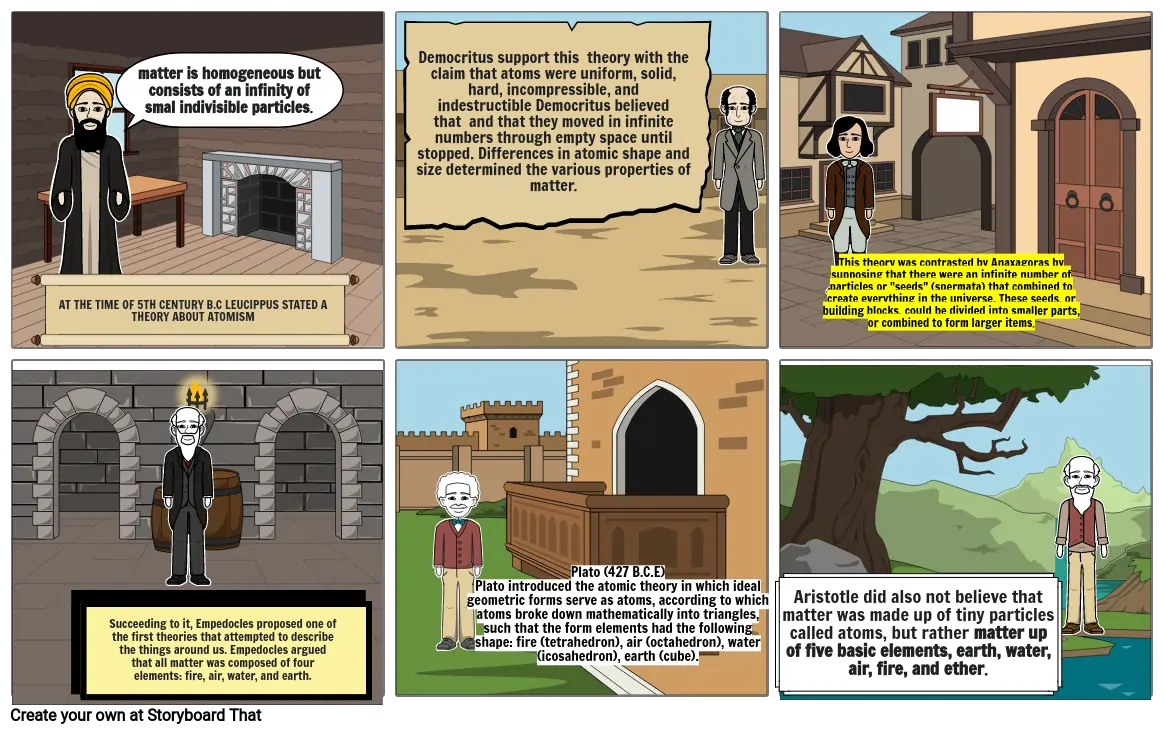HISTORY OF CHEMISTRY

Storyboard Text
-
- AT THE TIME OF 5TH CENTURY B.C LEUCIPPUS STATED A THEORY ABOUT ATOMISM
- matter is homogeneous but consists of an infinity of smal indivisible particles.
- Democritus support this theory with the claim that atoms were uniform, solid, hard, incompressible, and indestructible Democritus believed that and that they moved in infinite numbers through empty space until stopped. Differences in atomic shape and size determined the various properties of matter.
-
- This theory was contrasted by Anaxagoras by supposing that there were an infinite number of particles or "seeds" (spermata) that combined to create everything in the universe. These seeds, or building blocks, could be divided into smaller parts, or combined to form larger items.
-
- Succeeding to it, Empedocles proposed one of the first theories that attempted to describe the things around us. Empedocles argued that all matter was composed of four elements: fire, air, water, and earth.
- Plato (427 B.C.E)Plato introduced the atomic theory in which ideal geometric forms serve as atoms, according to which atoms broke down mathematically into triangles, such that the form elements had the following shape: fire (tetrahedron), air (octahedron), water (icosahedron), earth (cube).
- Aristotle did also not believe that matter was made up of tiny particles called atoms, but rather matter up of five basic elements, earth, water, air, fire, and ether.
Over 30 Million Storyboards Created

